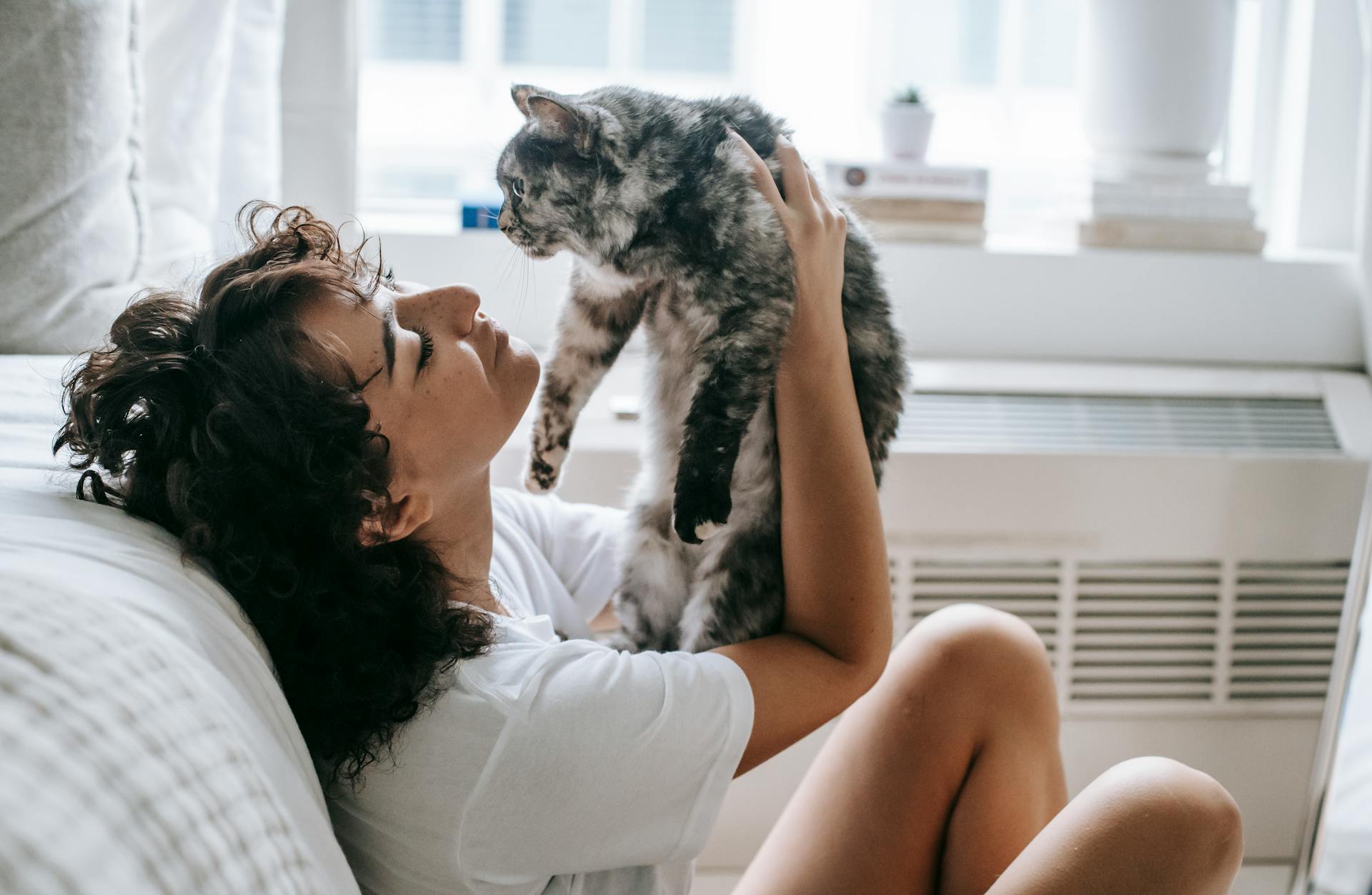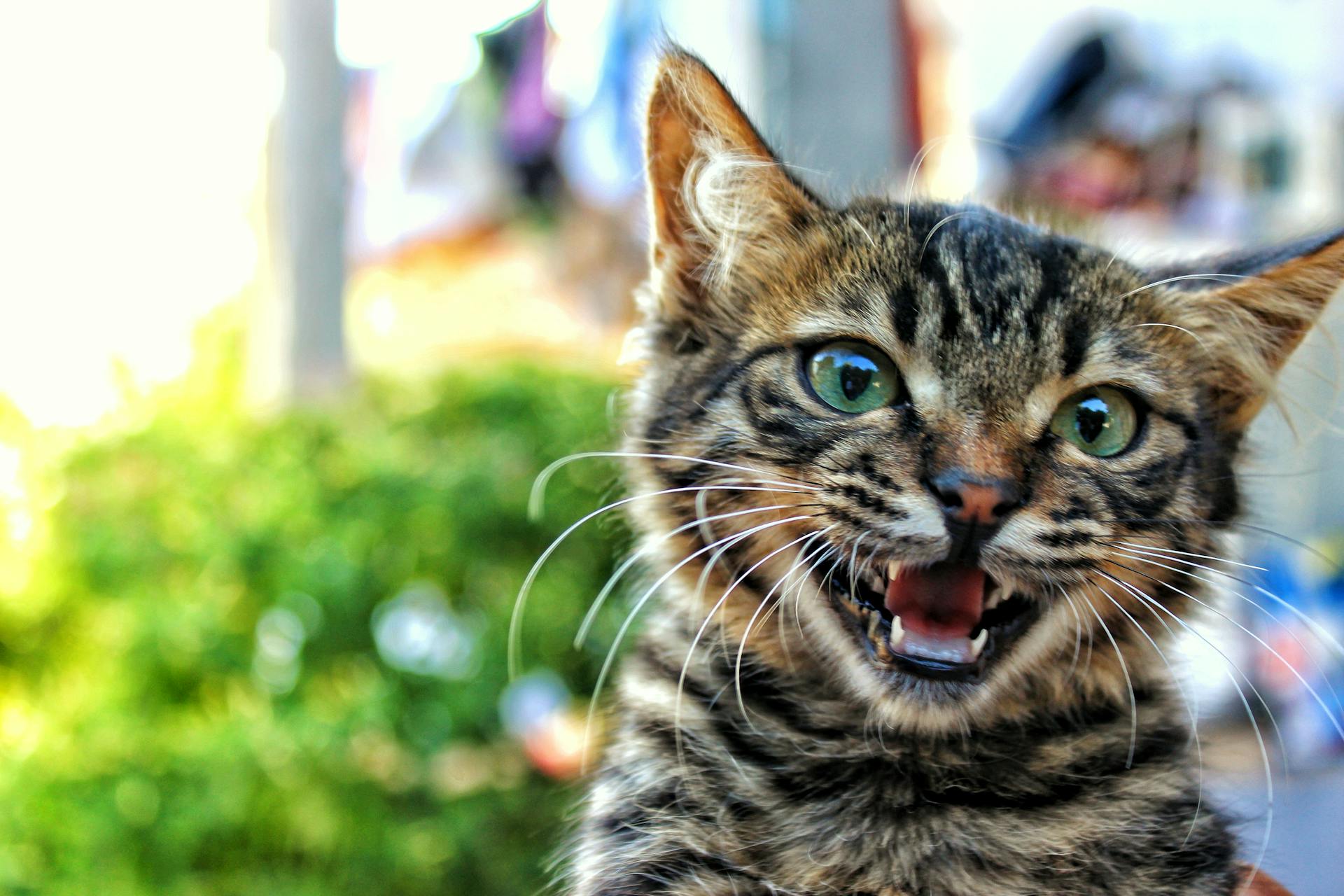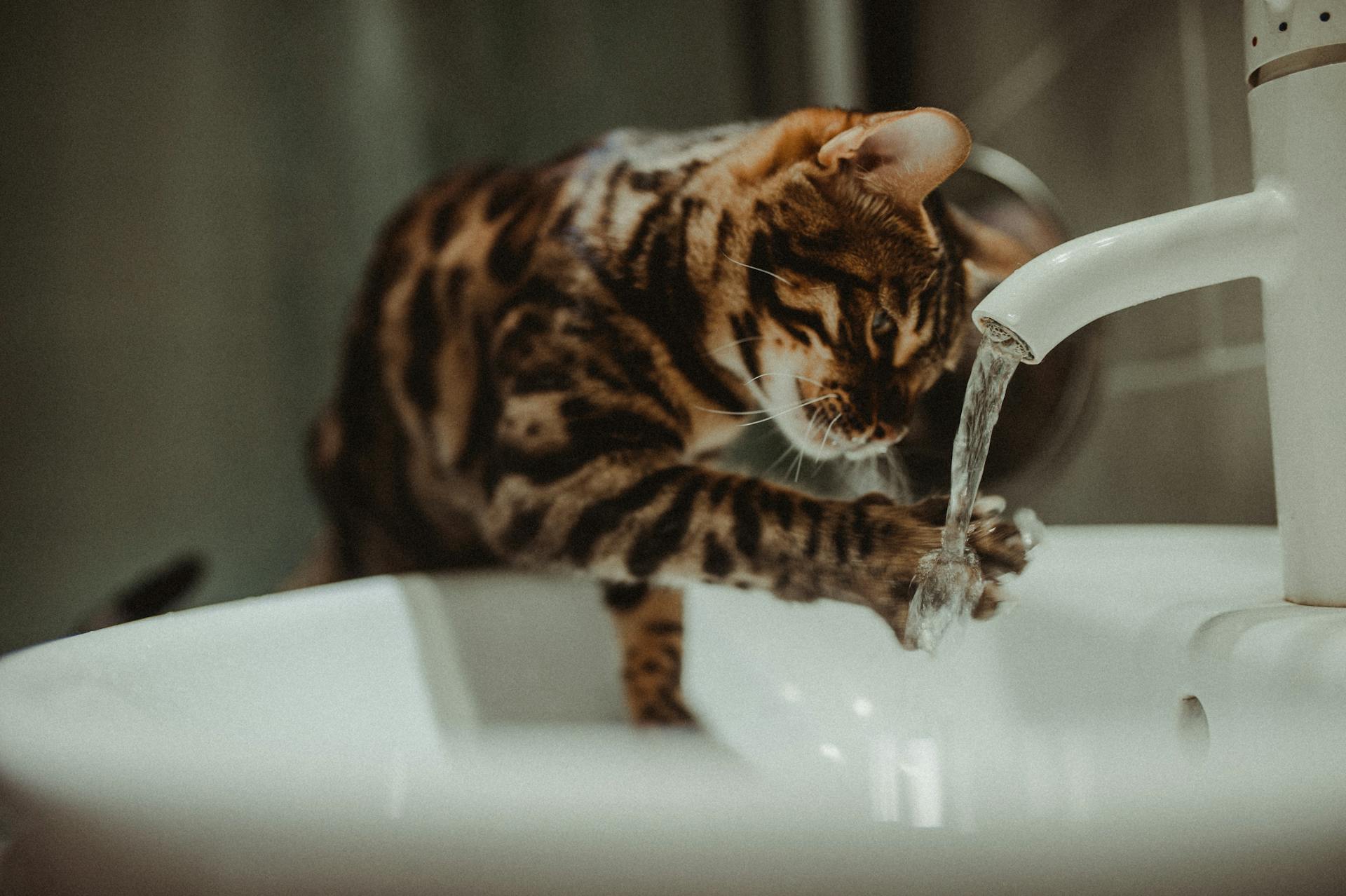
Kitten zoomies are a real thing - they're those sudden bursts of energy where your little ball of fluff zooms around the room like a furry little bullet.
Kitten zoomies usually happen when kittens are between 2 and 4 months old.
As they explore their surroundings, kittens need to burn off excess energy, and zoomies are a natural way for them to do so.
What Are Zoomies?
Kitten zoomies are a common phenomenon in younger cats, characterized by sudden bursts of energy and hyperactive behavior. Cats may engage in running, jumping, and playful antics during zoomies.
Zoomies are also known as Frenetic Random Activity Periods (FRAPs). This name accurately describes the unpredictable and energetic nature of this behavior.
During zoomies, cats may chase imaginary prey, which can be entertaining to watch. I've seen kittens zoom around the house, pouncing on invisible bugs and leaping over furniture.
Zoomies are a normal part of a kitten's development, and they usually start to fade as the cat matures.
Causes of Zoomies
Kittens can get the zoomies due to stress-related reasons, which can be a sign of under-stimulation and frustration.
Younger cats are more prone to zoomies, as they have excess energy to burn off.
Indoor cats are more likely to exhibit zoomies because they lack the physical activity they would get outdoors.
An occasional burst of zoomies is quite normal, but daily occurrences can be a sign of a bigger issue.
If your kitten is getting the zoomies on a daily basis, it's likely they're under-stimulated and need more mental and physical stimulation.
Lack of exercise can also contribute to zoomies, so making sure your kitten gets enough playtime and physical activity is crucial.
Additional reading: Are Zoomies a Sign of a Happy Dog
How to Manage Zoomies
Kitten zoomies can be a real challenge to manage, but don't worry, I've got some tips to help you out.
Firstly, it's essential to understand that kitten zoomies are a natural behavior, especially in younger cats or indoor cats. They're actually called a 'frenetic random activity period' or FRAP, and it's a way for your kitten to burn off excess energy.
To prevent zoomies from happening too often, you can engage your kitten in interactive play using toys like laser pointers, fishing pole toys, and scratching posts. This will help fulfill their natural hunting instincts and keep them mentally and physically active.
Breaking up play sessions into several short five-minute sessions throughout the day can be highly beneficial in managing and preventing zoomies effectively. This approach will keep your kitten entertained and allow them to burn off excess energy.
Boredom/Lack of Activity
Living inside is safe for a house cat, but it's also far less interesting than surviving in the wild. Indoor cats are desperate for something to break up the monotony, so they make up their own fun time in the form of the zoomies.
Cats have bursts of energy that need to be released, especially kittens and younger cats. This excess energy can be a result of them conserving energy while sleeping a lot.
Indoor cats engage in zoomies to compensate for the lack of outdoor hunting, which is a natural behavior for them. It's a way for them to burn off excess energy and stay entertained.
If your cat is getting the zoomies on a daily basis, it could be a sign that they are under-stimulated and frustrated. This is stressful for your cat, and also likely to cause you a bit of stress too, as they tear around your home.
You can remedy this by ensuring your cat has enough mental and physical stimulation during the day. This can be achieved by engaging your cat in interactive play using toys such as laser pointers and scratching posts.
Feed Often in Small Amounts
Feeding your cat small amounts frequently can help regulate their energy levels. This can be especially helpful for cats prone to Zoomies.
Using puzzle feeders is a great way to entertain your cat while controlling their eating. It's a clever way to keep them engaged.
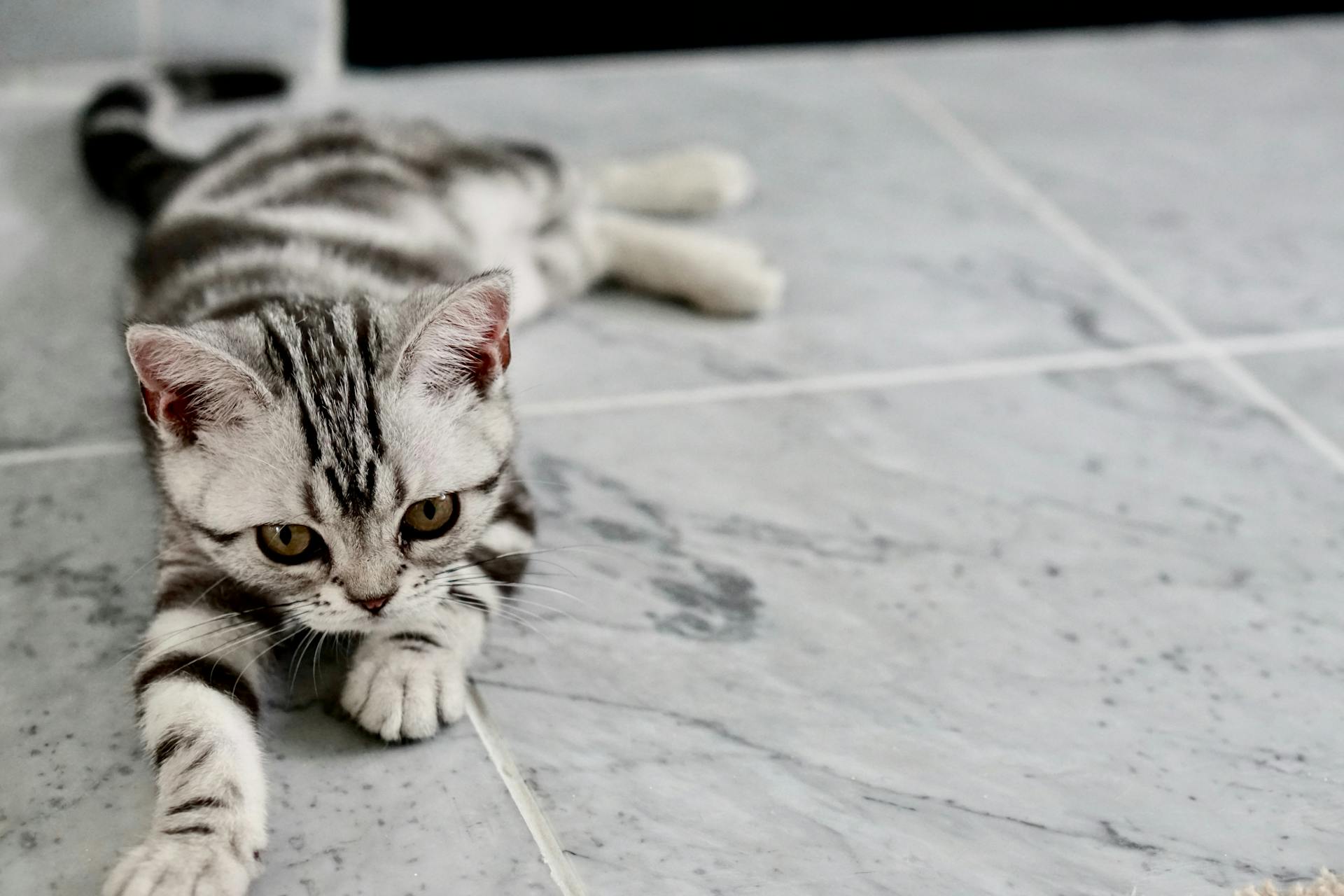
Feline stress can quickly lead to skin problems caused by overgrooming, and stress-induced cystitis can be life-threatening. So, keep an eye out for signs of stress in your cat.
If you notice bald patches or sore skin, or if your cat is passing urine more frequently or straining, it's time to call the veterinarian. These are all warning signs that your cat needs medical attention.
Why Cats Get Zoomies
Cats get the zoomies due to excitement upon seeing their owners again after a period of being alone.
Kittens, in particular, have shorter tolerance for being alone compared to adult cats.
Some cats get the zoomies as a release of stress and anxiety they experienced during their owner's absence.
This behavior is more common in younger cats or indoor cats.
An occasional burst of "frapping" is quite normal, but daily zoomies can be a sign that your cat is under-stimulated and frustrated.
Cats also get the zoomies due to their natural hunting instincts, which can be triggered by imaginary prey and lead to a frenzy of activity.
Domesticated cats are still driven by their instincts to hunt and chase prey, even with easy access to food.
Related reading: Introducing Kitten to Dog with Prey Drive
Hunting Instinct
Cats are still driven by their instincts to hunt and chase prey, even with easy access to food.
Some cats get the urge to act out on these instincts by stalking imaginary prey and suddenly pouncing.
A crazy look in the eye can signal an episode of the zoomies is about to commence.
In healthy cats, the zoomies can be normal and behaviorally-appropriate.
Some cats just love a good romp and run about the house to burn off excess energy.
After all, it’s all in good fun.
Why Cats Get Zoomies
Cats get the zoomies because they have a natural instinct to hunt and chase prey, even if they're well-fed.
Kittens, in particular, have shorter tolerance for being alone compared to adult cats, which can lead to zooming behavior when their owners return home.
The zoomies can be a sign that your cat is under-stimulated and frustrated, especially if it's happening on a daily basis.
Living indoors can be boring for cats, and they may make up their own fun by running around frantically.
Some cats get a crazy look in the eye signaling an episode of the zoomies is about to commence.
Regular cat zoomies can be stressful for both you and your cat, and may lead to destructive behavior like tearing curtains.
Cats need a way to expel their pent-up energy, especially after sleeping for most of the day, which can be why they get the zoomies at night.
If you think your cat is frustrated, there are simple things you can do to help, like providing more mental and physical stimulation during the day.
What Does "Do" Mean?
Cat zoomies are a natural behavior that most cats will display at some time or other. They're most commonly seen in young and indoor cats.
Occasional frapping episodes are pretty normal, but they can also signify that your cat is stressed or frustrated. This might be due to boredom, anxiety, or a lack of mental or physical stimulation.
If your cat is left alone for long periods, they may become bored, anxious, or stressed. This can lead to other stress signs like overgrooming, urinary issues, or pooping outside the litter box.
Cat zoomies are also common after eating, perhaps because your cat has plenty of energy to burn off.
Timing and Duration
Kitten zoomies are a whirlwind experience, and understanding their timing and duration can help you prepare for the chaos.
Cat zoomies tend to be reasonably short, lasting anywhere from a couple of minutes to half an hour. This short burst of energy can be exhausting for kittens, so it's no wonder they're ready to crash afterwards.
If you're trying to sleep or protect your belongings from scratching claws, it may feel like kitten zoomies last forever, but in reality, they're over before you know it.
Nighttime Precautions
To prevent zoomies at night, make sure your cat is physically and mentally exhausted at the end of the day. Try interactive toys that allow kitty to play and be rewarded for their efforts.
Setting a few toys out before bedtime can help get that extra energy out.
How Long?
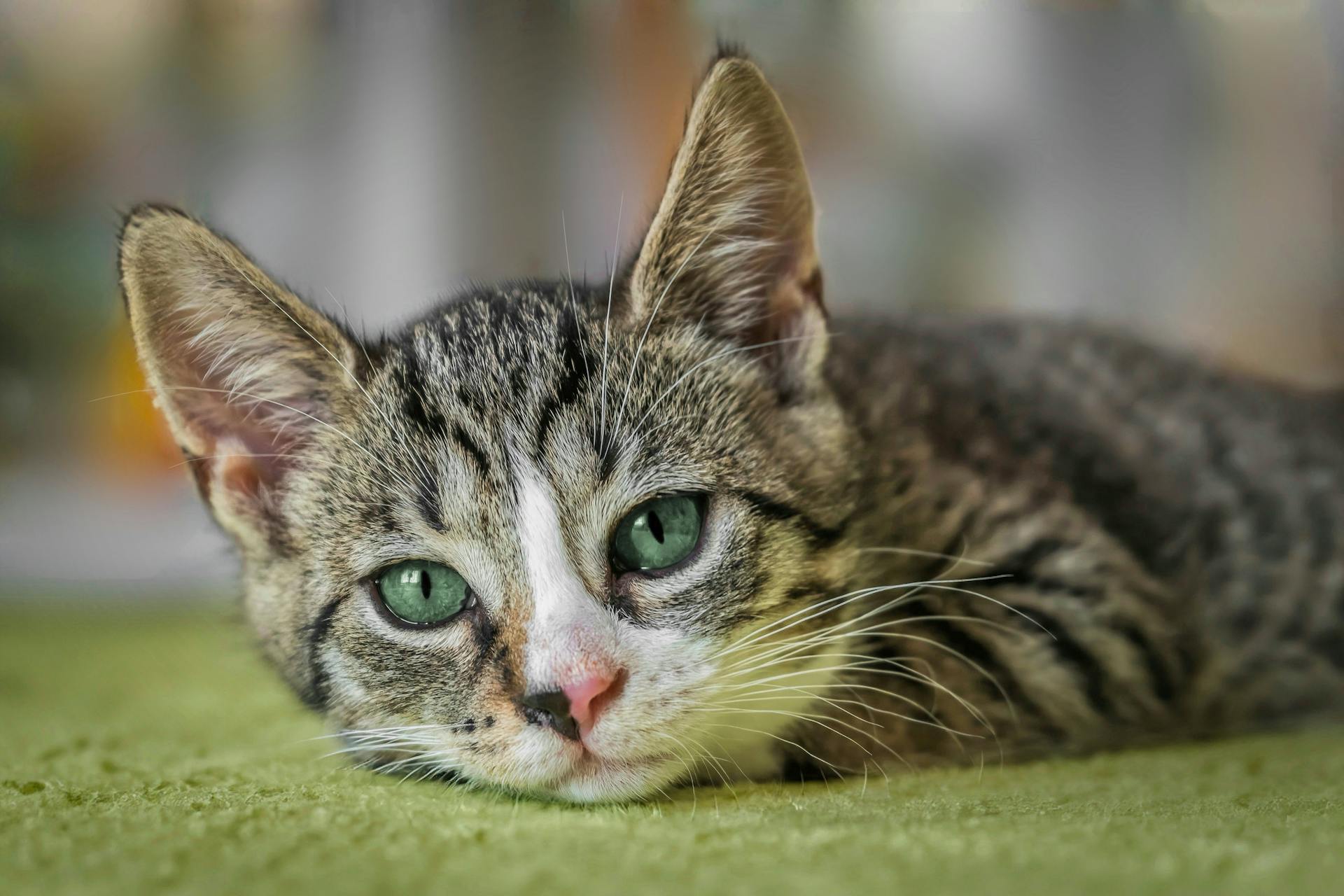
Cat zoomies tend to be reasonably short, lasting anywhere from a couple of minutes to half an hour. Although that doesn't sound like a long time, it may feel much longer if you're trying to sleep or fruitlessly trying to protect your new curtains or furniture from scratching claws!
You might be surprised at how exhausting cat zoomies can be for your feline friend. They can be a sign of pent-up energy that needs to be released, so make sure your cat has plenty of opportunities for playtime and exercise.
Cat zoomies are usually over in a flash, but they can leave a trail of destruction in their wake. Be prepared for scratched furniture, torn curtains, and other household chaos.
If you're trying to catch a glimpse of your cat's zoomies, be prepared to act fast. They can last anywhere from a couple of minutes to half an hour, so you'll need to be quick on your feet to capture the moment.
Frequently Asked Questions
Do zoomies mean a cat is happy?
Zoomies can be a sign of happiness in cats, but excessive daily zoomies may indicate under-stimulation and frustration. If your cat is experiencing frequent zoomies, it's worth exploring ways to provide them with more mental and physical stimulation.
What age do kittens stop getting zoomies?
Kittens typically stop getting frequent "zoomies" between 1-2 years of age, as they mature into adulthood. However, some cats may still enjoy occasional bursts of energy even as adults.
How do I calm my kitten down from zoomies?
To calm your kitten down from zoomies, engage them in active play with toys or a fishing rod to satisfy their natural instincts. Providing a stimulating environment with toys and scratching posts can also help reduce excess energy.
Should you ignore cat zoomies?
You can usually ignore cat zoomies, as they're a sign of a healthy and playful cat. However, if your cat's zoomies last longer than 5 minutes or are accompanied by other concerning behaviors, it's best to consult with a veterinarian.
How long do zoomies last in cats?
Zoomies in cats can last anywhere from a few seconds to up to half an hour or more, depending on the individual pet's energy level and playfulness. If your cat is experiencing zoomies, it's likely a short-lived but exciting episode of play and exercise.
Featured Images: pexels.com

